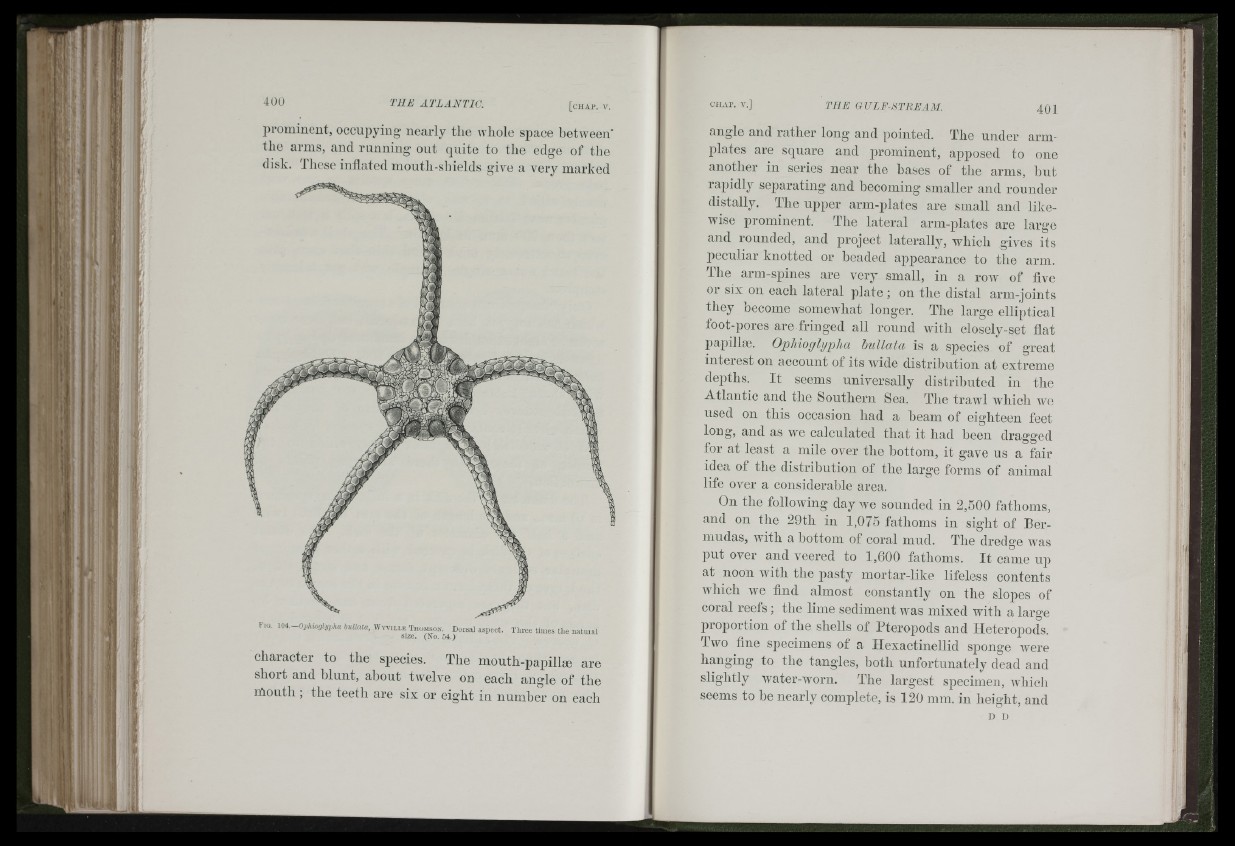
U.‘
* '
prominent, occupying nearly the whole space between
the arms, and rLmning out quite to the edge of the
disk. These inflated mouth-shields give a very marked
F i g . 1 0 4 . Ophioglypha bullata, W y v i l l e T h o m s o n . Do rsa l a s p e c t. T h re e tim e s t h e n a tu r a l
Size. (No. 54.)
character to the species. The mouth-papillie are
short and blunt, about twelve on each angle of the
month ; the teeth are six or eight in number on each
angle and rather long and pointed. The under arm-
plates are square and prominent, apposed to one
another in series near the bases of the arms, h u t
rapidly separating and becoming smaller and rounder
distally. The upper arm-plates are small and likewise
prominent. The lateral arm-plates are large
and rounded, and project laterally, which gives its
peculiar knotted or beaded appearance to the arm.
The arm-spines are very small, in a roAv of five
or six on each lateral plate ; on the distal arm-joints
they become somewhat longer. The large elliptical
foot-pores are fringed all round with closely-set flat
]4apilla3. Ophioglypha hullala is a species of great
interest on account of its Avide distribution at extreme
depths. I t seems universally distributed in the
Atlantic and the Southern Sea. The traAvl Avhich aa’g
used on this occasion had a beam of eighteen feet
long, and as we calculated th at it had been dragged
for at least a mile over the hottom, it gave us a fair
idea of the distribution of the large forms of animal
life over a considerable area.
On the following day Ave sounded in 2,500 fathoms,
and on the 29th in 1,075 fathoms in sight of Bermudas,
with a hottom of coral mud. The dredge Avas
put over and veered to 1,600 fathoms. It came up
at noon Avith the pasty mortar-like lifeless contents
Avhich Ave find almost constantly on the slopes of
coral reefs; the lime sediment was mixed with a large
proportion of the shells of Pteropods and lieteropods.
Two fine specimens of a Hexactinellid sponge Avere
hanging to the tangles, both unfortunately dead and
slightly Avater-Avorn. The largest sjoecimen, Avhicli
seems to he nearly complete, is 120 mm. in height, and
D D
m i